We now have a Child Passenger Safety Technician (CPST) on our crew!
What is a CPST?
A Child Passenger Safety Technician is specifically trained on the topic of child restraints and safety within a vehicle. They can spot problems and know the specifics about seats and cars on the market. They make sure that a child is in the correct seat for their age, height, and weight. With upwards of 80% of child restraints being used incorrectly, a CPST educates parents on the correct use of seats and shows them how to properly install them.
Hayfork Fire has car seats that are free of charge to residents of Hayfork, Hyampom, WIldwood and Post Mountain. If we do not have a seat suitable for your child we can put you in contact with a CPST who does. Our CPST is available by appointment only to provide families with new seats, answer questions, or help with installation and fitting of a seat you own.
Hayfork Fire CPST Jazmin Hanover
Don’t live in Hayfork? Use this link to find a CPST near you:
https://cert.safekids.org/get-car-seat-checked
When meeting with a CPST you will be able to learn more about the following information:
The child safety seat law requires that children ride properly secured in a child safety seat or booster seat until they are at least 8 years old OR are 4 ft. 9 in. tall.
Road injuries are the leading cause of preventable deaths and injuries to children in the United States. Correctly used child safety seats can reduce the risk of death by as much as 71 percent.
Select a car seat based on your child’s age and size and choose a seat that fits in your vehicle and use it every time.
Always refer to your specific car seat manufacturer’s instructions; read the vehicle owner’s manual on how to install the car seat using the seat belt or LATCH system; and check height and weight limits.
To maximize safety, keep your child in the car seat for as long as possible, as long as the child fits within the manufacturer’s height and weight requirements.
Keep your child in the back seat through age 12.
A rear-facing car seat is the best seat for your young child to use and should be used from 0-2 years. It has a harness and, in a crash, cradles and moves with your child to reduce the stress to the child’s fragile neck and spinal cord.
A forward-facing car seat has a harness and tether that limits your child’s forward movement during a crash. These seats vary in style, but should be used until your child outgrows the harness or seat by maxing out the manufacturers height or weight limits
A booster seat positions the seat belt so that it fits properly over the stronger parts of your child’s body. These should be used until your child is at least 8 years old and meets the criteria for the 5 step test.

For more information please visit:
https://www.safekids.org/car-seat
https://www.chp.ca.gov/programs-services/programs/child-safety-seats
What to expect when meeting with a CPST.
Before the Car Seat Checkup
- Be prepared to learn, not just watch the CPS technician install the car seat. They’re trained to teach you.
- Know your child’s current weight and height.
- Using the car seat instruction manual and the vehicle owner’s manual, try to install the car seat into your vehicle prior to your appointment
- Tip! Check the index of your vehicle owner’s manual for “child safety seats”.
Be sure to bring the car seat instruction manual AND the vehicle owner’s manual with you to your appointment. - If possible, bring your child with you as well as another caregiver to help while you are learning.
- Be prepared to learn. The CPS Technician is trained to educate you to install and use your car seat properly in your vehicle
During the Car Seat Checkup
- Ask to see proof of your technician’s current certification.
- This one-on-one education typically takes 20-30 minutes, depending on your car seat and vehicle. The technician will take all the time you need until you feel comfortable that your car seat is used and installed correctly.
- During the checkup, a CPS Technician will:
- Fill out a car seat check form to document the process (including car seat type, location in vehicle, misuse observations, etc.). The form may be electronic or on paper.
- Review car seat selection appropriate for your child’s age, weight and height as well as review factors affect proper use.
- Review the car seat instruction manual and the vehicle owner’s manual to ensure that both are being followed correctly.
- Ensure that an appropriate seating position in the vehicle is being used.
- Check the car seat for recalls, visible damage and an expiration date.
- Guide your installation of the car seat. You are encouraged to ask to learn how to install the car seat in different seating positions with different installation techniques.
- Discuss the next steps for your child, such as when to move to the next type of car seat.
- Discuss your state laws and best practice recommendations for occupant safety.
- Discuss the benefits of everyone riding properly restrained, including all adults.
- Discuss safety in and around the vehicle.
- Answer any questions you may have, so ask away.
After the Car Seat Checkup
A car seat checkup is considered a success if you can answer yes to the following questions:
- Did you perform the installation?
- Do you feel confident about installing and using the car seat correctly?
- Were your questions answered? If not, were you given direction as to who you should contact or will the CPS Technician follow up with you?
